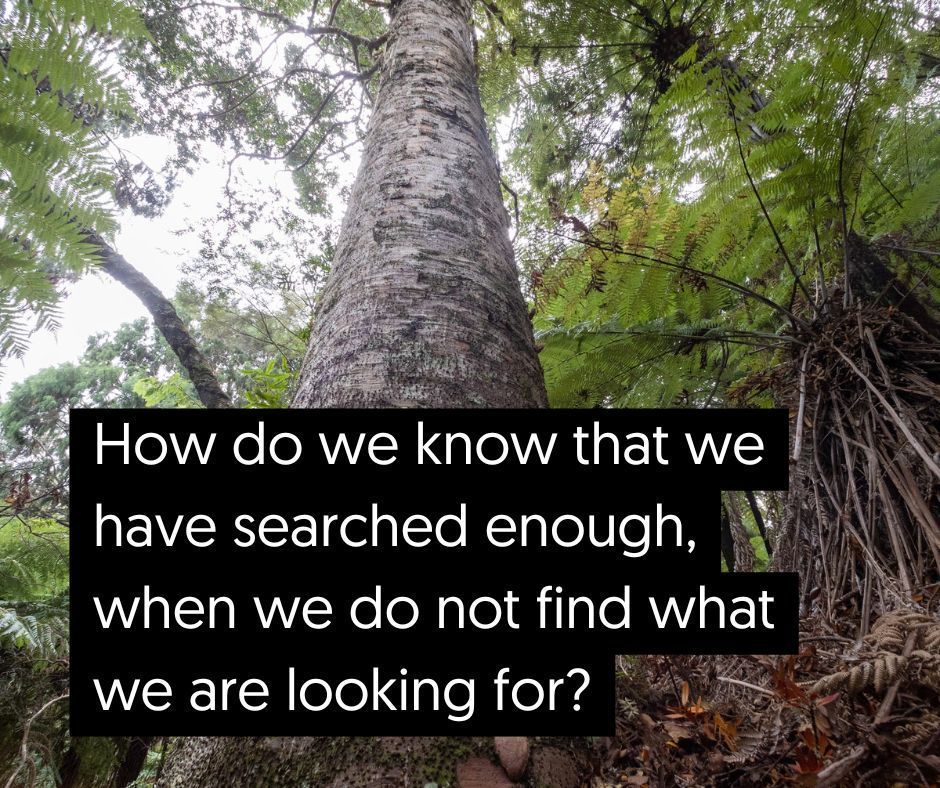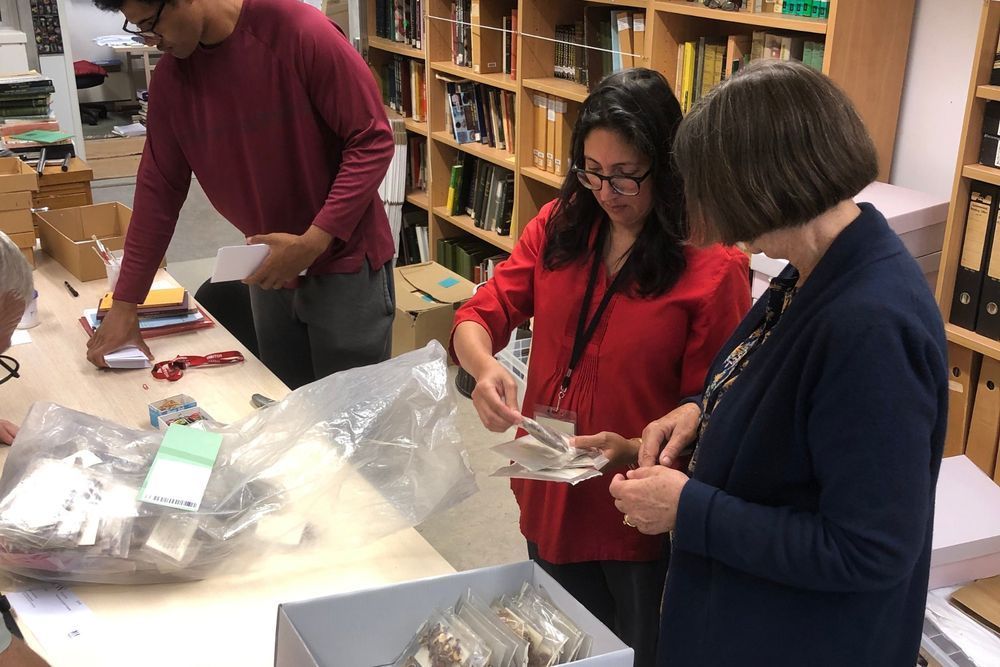
Diversifying whenua Māori (Māori land) may appear simple - but is it? What social, cultural and historical factors can impede transitioning towards more diverse whenua Māori?
buff.ly/I3KtB0K
@manaakiwhenua.bsky.social
Manaaki Whenua – Landcare Research is a Group of the Bioeconomy Science Institute. Science for our land and our future – Ko te pūtaiao mō tō tātou whenua, mō āpōpō.

Diversifying whenua Māori (Māori land) may appear simple - but is it? What social, cultural and historical factors can impede transitioning towards more diverse whenua Māori?
buff.ly/I3KtB0K

The 𝘏𝘦 𝘕𝘨𝘢𝘩𝘦𝘳𝘦, 𝘏𝘦 𝘒𝘰𝘳𝘰𝘸𝘢𝘪 project focuses on resilient landscapes on highly erosion-prone Māori land. Post-pine-harvest regenerating native forest 🌳 is vital in protecting this land, and researchers are working to build a holistic restoration framework with mana whenua.
buff.ly/sVc5Kxo

A team of researchers, led by Kaihautū Māori Research Impact Leader Dr Shaun Awatere, has developing tools that support Māori communities make more informed climate adaptation decisions through a te ao Māori lens.
buff.ly/IBWzWKV
#climatechange
24.09.2025 06:00 — 👍 0 🔁 0 💬 0 📌 0
The amount of CO2 in the atmosphere continues to rise far above pre-industrial concentrations - and we've been working since the 1990s to quantify the effects of this rise on plant growth 🌱
buff.ly/ssjo5zy
#climatechange

For the last 6 years, we've been benchmark sampling soil organic carbon at 500 sites across New Zealand, and are now pleased to report that the full results of the benchmark sampling are in!
buff.ly/Zlwoc2F

We're now part of the Bioeconomy Science Institute @bioeconomyscience.bsky.social - an exciting new chapter in the story of remarkable science 🧪 in Aotearoa New Zealand.
More » buff.ly/yFJKf4p




Summer Internships 2025-26 - open to undergraduate or postgraduate tauira #Māori at University or Wānanga looking to grow their skills and career pathways in scientific research.
Applications close: midnight 14 September.
Full details - buff.ly/mGeOnC5

WEBINAR: The impact of mammalian browsers on carbon storage
Tues 9 Sept, 11-11.30am
Understanding condition & change of AoNZs native forests is critical for biodiversity, resilience to disturbance, C cycling. Talk summarises current knowledge and recent research.
REGISTRATION » buff.ly/khuwMum

Māori Summer Internships 2025-26
𝑃𝑜𝑖𝑝𝑜𝑖𝑎 𝑘𝑖𝑎 𝑟𝑒𝑟𝑒 – ℎ𝑒𝑙𝑝𝑖𝑛𝑔 𝑡ℎ𝑒 𝑓𝑙𝑒𝑑𝑔𝑙𝑖𝑛𝑔 𝑡𝑜 𝑓𝑙𝑦
These #internships are open to undergraduate or postgraduate #tauira #Māori at University or Wānanga looking to grow their skills and career pathways in scientific research.
Details: buff.ly/repGI9W

Parasites are – naturally – unpopular. They don’t get good PR. They give people the “ick”. Their passing is rarely mourned – but perhaps it should be.
www.landcareresearch.co.nz/news/spare-a...
#LongTermEcology #PalaeoEcology
Welcome to the Bioeconomy Science Institute - formed by the merging of AgResearch, @manaakiwhenua.bsky.social, Plant & Food Research and Scion.
We’re here to grow a resilient, sustainable bioeconomy — through innovation, collaboration and science that delivers real-world impact. 🌱

Then➡️ Now
Manaaki Whenua, AgResearch, Plant & Food Research and Scion are now the 𝗕𝗶𝗼𝗲𝗰𝗼𝗻𝗼𝗺𝘆 𝗦𝗰𝗶𝗲𝗻𝗰𝗲 𝗜𝗻𝘀𝘁𝗶𝘁𝘂𝘁𝗲.
Follow us on our new Bluesky page to stay in the loop – this account will be winding down soon.
bsky.app/profile/bioe...
New name, same science — even more connected.

This is a question that managers face when attempting to ascertain the presence of a pest or a pathogen in an area, so that management actions can be planned. But what is the point at which researchers can stop looking, knowing with confidence that an area is pest- or pathogen-free?
buff.ly/smyaLne

In a curious case of finding something unexpected whilst looking for something else, our palaeoecologists discovered that moa were fond of fungi, esp. colourful truffle-like species that mimic fruit. This advances our understanding of present-day and future native forest resilience
buff.ly/69EHju7



A trove of 654 specimens of fungi have been welcomed home.
The specimens had been held at Royal Botanic Gardens, Kew, and will now be catalogued and digitised – making them widely-available to researchers.
buff.ly/dOoxJUf

When snow on the Southern Alps turned from white to red in 2019/20, ash from Australia’s bushfires was blamed. Researchers now say the real culprit was desert dust storms that sent massive amounts of red dust across the Tasman - likely to occur more often as the climate warms.
buff.ly/wvSqT6y

A recent study has shown that native birds are always on the menu for invasive rats in NZ’s beech forests, regardless of how much other food might be available. The study delved into the DNA inside rat stomachs; one in five rats in a remote Fiordland forest had been eating birds.
buff.ly/CtXSBt8

The Central North Island Desert Road tussock-lands are special, containing unique landscapes and ecosystems with cultural significance. This special environment faces a persistent threat from invasive species such as broom, gorse, and yellow tree lupin.
MORE » buff.ly/zXpKvUz

In April last year, Tuvalu released its first-ever natural enemy on the atoll of Funafuti to control their number one weed, 𝘓𝘦𝘶𝘤𝘢𝘦𝘯𝘢 𝘭𝘦𝘶𝘤𝘰𝘤𝘦𝘱𝘩𝘢𝘭𝘢 (tamalini). A sap-sucking psyllid, known as a major pest of 𝘓𝘦𝘶𝘤𝘢𝘦𝘯𝘢 in agroforestry, is expected to help control 𝘓𝘦𝘶𝘤𝘢𝘦𝘯𝘢 in Tuvalu.
buff.ly/IEyRDum

𝗪𝗘𝗕𝗜𝗡𝗔𝗥: A pilot study on unifying terrestrial ecosystem typologies in Aotearoa New Zealand
Tues 12 Aug, 11:00-11:45am
Talk focuses on terrestrial ecosystems and the move toward a unified national typology—a consistent, cross-domain approach for classifying #ecosystems.
REGISTER » buff.ly/xLCI3gY




Last week marked a milestone for the Bioeconomy Science Institute, with Scion hosting the inaugural Board meeting at Te Papa Tipu Innovation Park.
With kōrero from Veronica Butterworth, Kim Wallace, Julian Elder and Mark Piper, the day reflected the collaborative spirit driving the BSI forward.

A new regional Pacific partnership with Samoa, Tonga, Fiji, Vanuatu, Cook Islands, and Niue is coming together! We'll be working alongside Ministries and organisations to strengthen the countries' capacity for climate resilience.
buff.ly/9ALYiJd

Another milestone for #Pacific #weed #biocontrol was passed in November 2024, with Vanuatu receiving the pico beetle to tackle the spread of the invasive weed prickly solanum, known as pico weed in Vanuatu.
buff.ly/Jmd8uMR

In addition to significant numbers of stray and feral cats, some 41% of households in AoNZ own at least one cat.
Cat management to enhance ecological outcomes is controversial and a suite of non-lethal approaches to reduce cat impacts on native biodiversity is needed.
buff.ly/JmxvAj5.

Today marks a new chapter for science in Aotearoa New Zealand.
The 𝗕𝗶𝗼𝗲𝗰𝗼𝗻𝗼𝗺𝘆 𝗦𝗰𝗶𝗲𝗻𝗰𝗲 𝗜𝗻𝘀𝘁𝗶𝘁𝘂𝘁𝗲 brings together AgResearch, Manaaki Whenua, Plant & Food Research, and Scion, uniting 𝟮,𝟬𝟬𝟬 𝗽𝗲𝗼𝗽𝗹𝗲 inc. 𝟭,𝟱𝟬𝟬+ 𝘀𝗰𝗶𝗲𝗻𝘁𝗶𝘀𝘁𝘀
Backed by 100+ years of legacy, today is day one
www.bioeconomyscience.co.nz

Don't forget - this year's NZ Garden Bird Survey starts this weekend. Led by Manaaki Whenua since 2017, this is Aotearoa New Zealand's longest-running citizen science project!
buff.ly/mBJ28w7

UPCOMING WEBINAR:
Design and delivery of voluntary biodiversity credit markets: eight difficult problems
Tues 8 July 2025
11:00 - 11:30 am
MORE DETAILS & REGISTRATION » buff.ly/GjLHtUs
𝗙𝘂𝗻𝗴𝘂𝘀 𝗼𝗳 𝘁𝗵𝗲 𝗬𝗲𝗮𝗿 𝟮𝟬𝟮𝟱 - 𝗹𝗮𝘀𝘁 𝗰𝗵𝗮𝗻𝗰𝗲 𝘁𝗼 𝘃𝗼𝘁𝗲!
With so many of you clearly as fascinated by fungi as we are, we've extended voting until
22 June - there's still time to make your mark if you haven't done so already 🍄🍄🍄
𝗩𝗢𝗧𝗘 »

WEBINAR: Ecological impacts of Cyclone Gabrielle
As part of the cyclone response, Manaaki Whenua partnered with others to assess the impacts of the cyclone on native ecosystems. This talk summarises key findings & presents recommendations for the future.
REGISTER » buff.ly/xAOA6l9